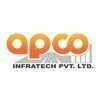Filter interviews by
URC Construction Interview Questions and Answers
44 Interview questions
Hazards are potential sources of harm or adverse effects on individuals, property, or the environment.
Physical Hazards: Examples include machinery, heights, and slippery surfaces.
Chemical Hazards: Substances like acids, solvents, and pesticides that can cause harm.
Biological Hazards: Bacteria, viruses, and other pathogens that can lead to illness.
Ergonomic Hazards: Poor workstation design leading to musculoskeleta...
Safety varies across contexts, encompassing physical, emotional, and environmental aspects to ensure well-being and protection.
Occupational Safety: Ensuring a safe workplace, e.g., using PPE in construction.
Environmental Safety: Protecting ecosystems, e.g., managing hazardous waste.
Food Safety: Preventing foodborne illnesses, e.g., proper food handling practices.
Home Safety: Reducing risks at home, e.g., installin...
Safety in construction site involves implementing measures to prevent accidents and injuries.
Ensuring all workers are properly trained on safety procedures
Regular inspections of equipment and machinery
Providing personal protective equipment (PPE) to all workers
Implementing fall protection measures for working at heights
Creating emergency response plans and conducting drills
Enforcing strict adherence to safety regu...
The number of HT strands required depends on the specifications provided for the project.
The number of HT strands required will vary based on the voltage rating, current carrying capacity, and insulation requirements of the project.
Consult the project specifications to determine the exact number of HT strands needed.
For example, a project with a higher voltage rating may require more HT strands to meet the necessa...
The cube test acceptance criteria is a set of standards used to determine if a cube specimen meets the required strength for construction purposes.
The acceptance criteria typically involves comparing the compressive strength of the cube specimen to a specified minimum value.
The cube test acceptance criteria may also include factors such as curing conditions, testing procedures, and age of the specimen.
For example,...
Concrete crack repairing involves cleaning the crack, filling it with a suitable material, and sealing it to prevent further damage.
Clean the crack thoroughly to remove any debris or loose material
Fill the crack with a suitable material such as epoxy or polyurethane
Seal the crack with a concrete sealer to prevent water infiltration and further damage
Calculate weight of steel plate based on given dimensions
Calculate the volume of the steel plate using the given dimensions
Use the density of steel (usually around 7850 kg/m^3) to calculate the weight
Weight = Volume x Density
Short term goal is to gain hands-on experience in site engineering. Long term goal is to become a successful and knowledgeable site engineer.
Short term goal: Gain practical experience in site engineering through on-site training and projects.
Long term goal: Develop expertise in site engineering, project management, and leadership skills to become a successful site engineer.
Short term goal example: Completing train...
w/c ratio stands for water-cement ratio, it is the ratio of the weight of water to the weight of cement used in a concrete mix.
w/c ratio is a crucial factor in determining the strength and durability of concrete.
A lower w/c ratio indicates a stronger and more durable concrete mix.
The w/c ratio should be carefully controlled to achieve the desired concrete properties.
For example, a w/c ratio of 0.5 means that for e...
Self compacting concrete is a type of concrete that does not require vibration or compaction during placement.
Contains high flowability and segregation resistance
Achieves full compaction purely through its own weight and without the need for mechanical vibration
Ideal for complex structures with congested reinforcement or in areas with limited access
Reduces labor costs and construction time
Examples include SCC mixt...
URC Construction Interview Experiences
59 interviews found
(2 Questions)
- Q1. What is the cube test acceptance criteria
- Ans.
The cube test acceptance criteria is a set of standards used to determine if a cube specimen meets the required strength for construction purposes.
The acceptance criteria typically involves comparing the compressive strength of the cube specimen to a specified minimum value.
The cube test acceptance criteria may also include factors such as curing conditions, testing procedures, and age of the specimen.
For example, a co...
- Q2. How many HT strands required according to specifications
- Ans.
The number of HT strands required depends on the specifications provided for the project.
The number of HT strands required will vary based on the voltage rating, current carrying capacity, and insulation requirements of the project.
Consult the project specifications to determine the exact number of HT strands needed.
For example, a project with a higher voltage rating may require more HT strands to meet the necessary in...
(2 Questions)
- Q1. Concrete crack repairing procedure
- Ans.
Concrete crack repairing involves cleaning the crack, filling it with a suitable material, and sealing it to prevent further damage.
Clean the crack thoroughly to remove any debris or loose material
Fill the crack with a suitable material such as epoxy or polyurethane
Seal the crack with a concrete sealer to prevent water infiltration and further damage
- Q2. Cube failure remedial action
I appeared for an interview in Mar 2025, where I was asked the following questions.
- Q1. Wark in height
- Ans.
Working at height involves safety measures to prevent falls and injuries when performing tasks above ground level.
Risk Assessment: Conduct thorough assessments to identify potential hazards when working at height, such as unstable surfaces or weather conditions.
Use of Personal Protective Equipment (PPE): Ensure workers wear appropriate PPE, like harnesses and helmets, to minimize injury risks.
Training and Competency: P...
- Q2. What does safety mean in various contexts?
- Ans.
Safety varies across contexts, encompassing physical, emotional, and environmental aspects to ensure well-being and protection.
Occupational Safety: Ensuring a safe workplace, e.g., using PPE in construction.
Environmental Safety: Protecting ecosystems, e.g., managing hazardous waste.
Food Safety: Preventing foodborne illnesses, e.g., proper food handling practices.
Home Safety: Reducing risks at home, e.g., installing smo...
- Q3. What are hazards?
- Ans.
Hazards are potential sources of harm or adverse effects on individuals, property, or the environment.
Physical Hazards: Examples include machinery, heights, and slippery surfaces.
Chemical Hazards: Substances like acids, solvents, and pesticides that can cause harm.
Biological Hazards: Bacteria, viruses, and other pathogens that can lead to illness.
Ergonomic Hazards: Poor workstation design leading to musculoskeletal dis...
I appeared for an interview in Dec 2024.
(3 Questions)
- Q1. What was your experience during the interview process?
- Ans.
The interview process was thorough and challenging, but overall a positive experience.
The interview consisted of multiple rounds, including technical, behavioral, and possibly a site visit.
I was asked to discuss my previous projects and experiences in detail.
There were questions about problem-solving skills and how I handle challenging situations on site.
Overall, the interviewers were professional and provided a clear ...
- Q2. What are your salary expectations?
- Ans.
My salary expectations are in line with industry standards and based on my experience and qualifications.
Research industry standards for Civil Site Engineers in the specific location
Consider years of experience and level of qualifications
Be prepared to negotiate based on job responsibilities and benefits package
- Q3. Why you last company leave
- Ans.
Seeking new challenges and opportunities for growth.
Desire for career advancement
Looking for new challenges
Opportunity for professional growth
Company restructuring or downsizing
Relocation to a new city
(2 Questions)
- Q1. About u r self
- Q2. What is cement and explain about it
- Ans.
Cement is a binding material used in construction to hold together bricks, stones, and other materials.
Cement is a fine powder made from limestone, clay, and other minerals.
When mixed with water, cement forms a paste that hardens and binds materials together.
Common types of cement include Portland cement, which is used in most construction projects.
Cement is a key ingredient in concrete, mortar, and grout.
Proper curing...
General aptitude questions
(2 Questions)
- Q1. General technical
- Q2. Deep Core technical questions
(1 Question)
- Q1. Basic HR questions
I applied via Naukri.com and was interviewed in Mar 2024. There were 3 interview rounds.
(2 Questions)
- Q1. About work procedures
- Q2. Resources arrangements.
Site administrative.
Cost and budget and agreed timeline.
Interview Preparation Tips
(1 Question)
- Q1. MEP DESIGN RELATED QUESTION
I applied via Campus Placement and was interviewed in Apr 2024. There were 3 interview rounds.
General knowledge and basic things about civil engineering.
Two topic given in which we have to choose one topic and start discussing in it.
(3 Questions)
- Q1. Tell me about your self?
- Ans.
I am a recent graduate with a degree in Civil Engineering, eager to learn and grow in the field of construction.
Recent graduate with a degree in Civil Engineering
Passionate about construction and eager to learn
Strong communication and problem-solving skills
Experience with CAD software and project management
- Q2. Short term and long term goal?
- Ans.
Short term goal is to gain hands-on experience in site engineering. Long term goal is to become a successful and knowledgeable site engineer.
Short term goal: Gain practical experience in site engineering through on-site training and projects.
Long term goal: Develop expertise in site engineering, project management, and leadership skills to become a successful site engineer.
Short term goal example: Completing training p...
- Q3. Are you ready to relocated in any place ?
- Ans.
Yes, I am willing to relocate for the right opportunity.
I am open to relocating for career growth and new experiences.
I understand that being flexible with location can lead to more opportunities.
I have relocated in the past for job opportunities and have found it to be a positive experience.
(3 Questions)
- Q1. Bar Bending Schedule
- Q2. Find out shuttering Area
- Ans.
Shuttering area can be calculated by finding the total surface area of the formwork used for concrete construction.
Calculate the surface area of each individual formwork used for the concrete structure
Add up the surface areas of all formworks to get the total shuttering area
Consider any openings or gaps in the formwork when calculating the area
- Q3. Semi circle area formula
- Ans.
The formula for the area of a semi-circle is (1/2) * pi * r^2, where r is the radius of the semi-circle.
The formula for the area of a semi-circle is (1/2) * pi * r^2
The radius (r) is half the diameter of the circle
Example: If the radius of a semi-circle is 5 cm, the area would be (1/2) * 3.14 * 5^2 = 39.25 cm^2
(3 Questions)
- Q1. Why u want to join this company ?
- Q2. Why u want to quit Your present company
- Q3. About my Salary

(5 Questions)
- Q1. Pannel arrection knowledge
- Q2. Drawing knowledge
- Q3. Site supervision
- Q4. Workers controlling
- Q5. Daucument work timely completed
Top trending discussions






URC Construction Interview FAQs
The duration of URC Construction interview process can vary, but typically it takes about less than 2 weeks to complete.
Tell us how to improve this page.
URC Construction Interviews By Designations
- URC Construction Assistant Engineer - Civil Interview Questions
- URC Construction Construction Management Interview Questions
- URC Construction Assistant Engineer Interview Questions
- URC Construction Senior Engineer Interview Questions
- URC Construction Junior Engineer Civil Interview Questions
- URC Construction Civil Site Engineer Interview Questions
- URC Construction HR Executive Interview Questions
- URC Construction Project Engineer Interview Questions
- Show more
Interview Questions for Popular Designations
Overall Interview Experience Rating
based on 66 interview experiences
Difficulty level
Duration
Interview Questions from Similar Companies
URC Construction Reviews and Ratings
based on 576 reviews
Rating in categories
|
Assistant Engineer
195
salaries
| ₹2.2 L/yr - ₹5.5 L/yr |
|
Senior Engineer
141
salaries
| ₹3.7 L/yr - ₹8.3 L/yr |
|
Assistant Engineer - Civil
55
salaries
| ₹2.3 L/yr - ₹6 L/yr |
|
Assistant Manager
53
salaries
| ₹4.6 L/yr - ₹10.2 L/yr |
|
Civil Site Engineer
41
salaries
| ₹1.9 L/yr - ₹5.5 L/yr |

L&T Energy Hydrocarbon

AECOM

Sterling & Wilson

Apco Infratech
- Home >
- Interviews >
- URC Construction Interview Questions













